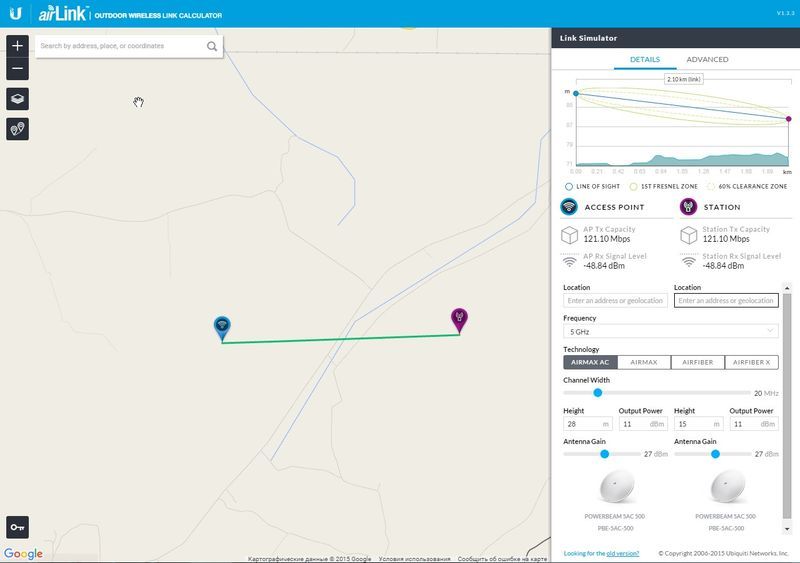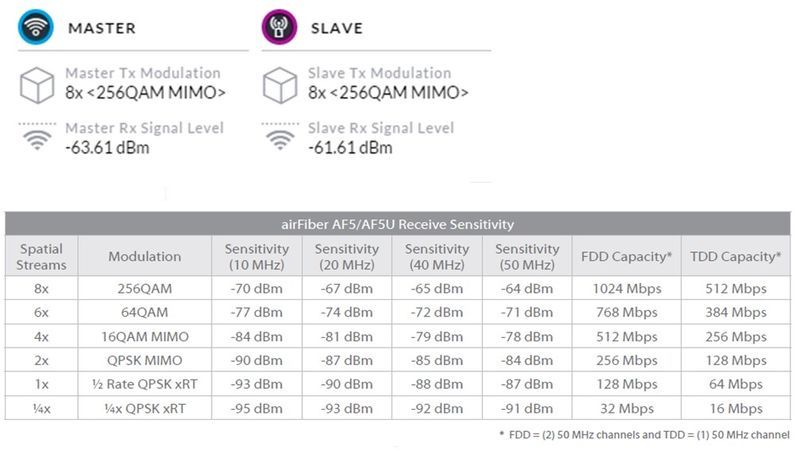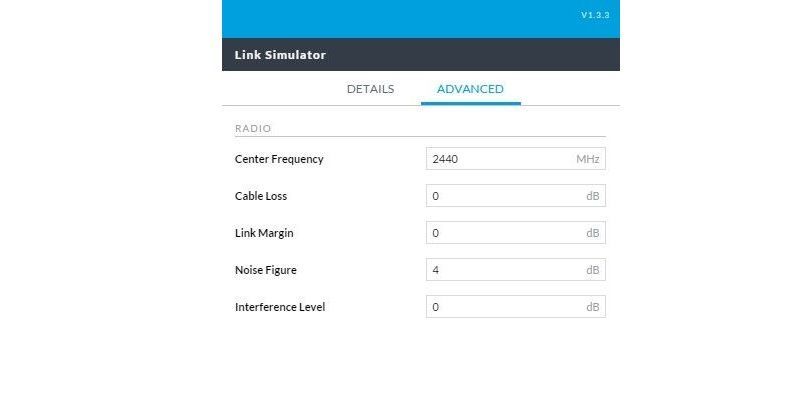How to calculate the range of communication equipment Ubiquiti. New version of the calculator AirLink

When choosing a Ubiquiti wireless equipment, each user is asked standard questions: What speed can be obtained at a given distance? What equipment model is better to choose? Is it even possible to organize a wireless channel?
To answer these questions, Ubiquiti Networks offers an intuitive and intuitive online service - AirLink | outdoor wireless link calculator .
AirLink features
AirLink has the following functionality:
')
- preliminary assessment of radio visibility at the site with the mapping of the terrain profile and Fresnel zones;
- Estimation of the expected throughput and signal level for the point-to-point channel on the selected equipment;
- support for the entire line of equipment Ubiquiti, AirMax ac , AirFiber and AirFiber X , as well as the corresponding antennas .

Calculator Tips
The AirLink calculator has an intuitive interface, and for an initial assessment of the radio channel, it is enough to know the coordinates or the address, as well as the suspension height of the base and client stations. But there are a few tricks. After setting the initial data of the planned points of installation, you can determine the appropriate technology and model of the device:

The specific model for a given technology is selected by shifting the slider “Antenna Gain”, while all design parameters change automatically. If with this gain several options are available, then a green circle appears next to the model name, and clicking on it opens a list. When performing calculations for the equipment of the AirFiber line, the expected modulation on this channel is displayed. To estimate the channel capacity, you can use the Receive Sensitivity table from the AirFiber documentation (all documentation is available on the manufacturer's website .

For a more accurate calculation, you can set additional parameters on the Advanced tab. First of all, you should pay attention to the Link Margin parameter, and when using external antennas, set an additional Cable Loss attenuation.

- Cable Loss - this is all the loss between the device connector and the antenna, taking into account the weakening of the signal during propagation through the cable and the loss in connectors. When using external antennas, you must specify the total attenuation in the cable for both sides of the radio channel (typical value is 2-4 dB).
- Link Margin - energy reserve, the optimal value depends on the length of the channel and the required availability ratio, that is, the percentage of time per year that the channel will operate at the estimated speed. It is recommended that you specify a Link Margin of at least 10dB or more to calculate reliable radio links.
- Noise Figure - amplifier noise figure. We recommend leaving the default value (4dB).
- Interference Level - the level of interference, you can usually use the default value if you do not have reliable information about the actual values (that is, if you did not measure valid values at the device placement points).
Conclusion
The updated AirLink calculator has become even more convenient and functional. The possibility of making calculations for AirFiber is included quite recently, which made AirLink a universal solution for the selection of Ubiquiti wireless equipment. It should be borne in mind that AirLink serves only for a preliminary assessment of the wireless channel and does not take into account the presence of such factors as buildings, trees, interference conditions, etc. Like any planning tool, it works with mathematical models of real devices. However, in most cases, this tool allows you to choose the right Ubiquiti equipment for a particular radio channel - it is quick and convenient to pick up.
Source: https://habr.com/ru/post/270541/
All Articles